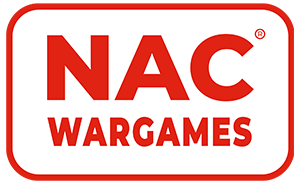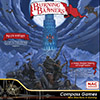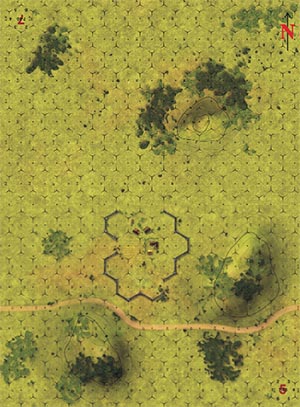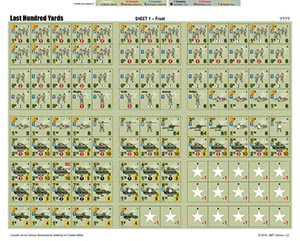FICHA DEL JUEGO
Precio: 
70,5 € - 15% = 59,95 €
70,5 € - 15% = 59,95 €
 Comprando este juego podrás ganar OcaPoints.
Comprando este juego podrás ganar OcaPoints. Edici�n: 



Reglas:



Reglas:
En la Tienda MasQueOca existen varios estados en los que puede estar un juego:
| En stock: el juego est� actualmente en nuestros almacenes y disponible para su env�o. (*) | Últimas unidades: tenemos en stock unas pocas unidades del juego bien por tratarse de una oferta especial en precio o porque el editor ya ha agotado las unidades de las que dispon�a y de momento no tiene previsto hacer una reimpresi�n. (**) |
|---|---|
| Precompra: el juego tiene una fecha aproximada de recepci�n por nuestra parte indicada en la ficha del juego y se proceder� al env�o del pedido en cuanto lo recibamos.��Atenci�n, las precompras no son reembolsables!
P500:�el juego no ha sido todav�a editado, pero se puede reservar sin compromiso para poder tenerlo asegurado cuando se edite. No es posible adquirirlo todav�a pero s� reservarlo. Cuando el juego alcance el n�mero de reservas necesarias o por decisi�n editorial pasar� al estado Precompra. |
Disponible Bajo Demanda: el juego no est� en este momento en nuestros almacenes, pero en principio estamos esperando su reposici�n por parte del proveedor. El tiempo de reposici�n aproximado para un juego nacional es de 1 semana y para un juego de importaci�n suele ser de 3/4 semanas, pudiera ser que recibamos la reposici�n antes o que en el caso de la importaci�n se demore por causas ajenas a nuestra voluntad. (***) �Atenci�n, las compras bajo demanda de juegos de importaci�n no son reembolsables! Pero si un juego no estuviera disponible en el editor, en el momento en que tuviésemos constancia te avisaríamos para que pueda solicitar su cambio o anulación. |
| Pendiente de Primera Edici�n: el juego no ha sido todav�a editado, pero se puede reservar sin compromiso para poder tenerlo asegurado cuando se edite. No es posible adquirirlo todav�a pero s� reservarlo. Cuando tengamos una fecha aproximada de recepci�n el juego pasar� al estado Precompra. | Agotado / Pendiente de Reedici�n: el juego se encuentra agotado por el fabricante y est� preparando una reedici�n. El juego se puede reservar sin compromiso para poder recibir la informaci�n del mismo en el momento que se reedite. No es posible adquirirlo todav�a pero s� reservarlo. Cuando tengamos una fecha de recepci�n el juego pasar� a Precompra. |
| Oportunidades: el juego est� en stock en unidades limitadas. Las Oportunidades son juegos que o bien han sufrido alg�n desperfecto en la caja o bien han sido abiertos por alguna raz�n (comprobaciones de control de calidad, etc), pero que su contenido est� perfecto. Es decir, son juegos que contienen todo lo necesario para poder jugarlo. No se remitir�n fotos espec�ficas del estado de las cajas, a todos los efectos se debe considerar como si se comprase el juego sin caja y sin inserto, aunque la gran mayor�a de las veces son desperfectos sin importancia. Estos juegos, dada la naturaleza de los mismos, no admiten cambios ni devoluciones. | Chollos: �el juego est� en stock en unidades limitadas. Los chollos son juegos nuevos a estrenar que ofrecemos a precios especiales. La oferta est� limitada en el tiempo y a las unidades que se pongan en oferta, una vez se retiren de la secci�n de Chollos su precio volver� a ser el est�ndar. Estos juegos, dada la naturaleza de los mismos, no admiten cambios ni devoluciones. |
| Descatalogado: el juego ha sido descatalogado por el fabricante por lo que en principio no se espera ninguna reimpresi�n. No obstante, en contadas ocasiones, un fabricante decide volver a imprimir un juego. No es posible adquirir el juego, pero s� reservarlo. Si tenemos constancia de una reimpresi�n y una fecha aproximada de recepci�n, pasar� a Precompra. | |
(**) Salvo que en el mismo momento de realizar la compra se realice en paralelo otra compra que agote las unidades, dada esta situaci�n el juego pasar� a disponible bajo demanda a precio normal o a descatalogado y se lo comunicar�amos por correo electr�nico.
(***) Salvo que al solicitar la reposici�n al editor nos comunique que el juego est� descatalogado o pendiente de reimpresi�n. Lo que se comunicar� por correo electr�nico en cuanto tengamos conocimiento.
|
The Last Hundred Yards (2nd Printing) The Last Hundred Yards is unlike any tactical wargame published to date. It introduces innovative systems intended to model Small Unit Behavior in Combat during WW2. It is fun, fast-paced, and provides a very good simulation of what it was like to command combat units at the platoon or company level. The game ispurposely designed to deliver a brisk yet intensive gaming experience that forces many decisions upon you as you take command of an infantry company in Western Europe after the D-Day landings.
Here�s a look at the major innovations and the designer�s thinking behind the systems featured in the The Last Hundred Yards: Initiative and Advantage: In The Last Hundred Yards, only the player winning the initiative has a proactive game turn; his opponent is limited to reaction only. Generally, the attacker has the initiative ormomentum at the beginning of a small unit combat as the result of plans and preparation, so he generally dictates the action. The defender will generally react to the attacker�s actions, hoping at some point to blunt or take away the attacker�s momentum. This is represented in The Last Hundred Yards by player advantage and the importance of winning the initiative. Simultaneous vs Sequential: In small unit combat, things are happening simultaneously. In an attack on an enemy position, some units of a formation provide cover fire to suppress the enemy, while other units maneuver against the enemy position. These actions take place simultaneously. But, in most current tactical games, opportunity fire is sequential and is typically represented by the Phasing Player moving a unit or stack of units a single hex at a time, giving the non-phasing player an opportunity to fire. Then he moves into the next hex, again giving the non-phasing player an opportunity to fire, etc. Once he has finished moving one unit or stack of units, he selects another and repeats the process until he has moved all of his units. Not only is this very time consuming, but it�s often unrealistic as well. First, the phasing player can adjust his move depending on the opportunity fire result. In reality, all these things are happening at the same time. Each player�s units would be moving and firing simultaneously and may not know or see where the enemy maneuvered. In The Last Hundred Yards, simultaneous movement and opportunity fire are modeled primarily through the Action / Reaction Cycle and Fire Mechanics.
Action/Reaction Cycle: �Where there is action there is always a reaction.� In The Last Hundred Yards, the Action/Reaction Cycle is the engine and the heart of the game. The Player winning the Initiative is the active player. He conducts actions (fire, maneuver, or recover) with the units of the active platoon. After all units of the active platoon have completed their actions, units of the non-active player may react (fire, maneuver, recover or do nothing) to units of the active player if units of the active player conducted actions in their LOS. Once the non-active player completes his reactions, the active player may react in turn to those units of the non-active player that conducted actions in their LOS. Or, the active player may instead activate the next platoon, repeating the cycle. A key aspect is that unless a unit sees an enemy unit conduct an action in his LOS he may not react. In essence, units that saw no action will most likely do nothing as they were most likely to hold their position until notified otherwise. Fire Mechanics: Fire mechanics in The Last Hundred Yards are based on the premise that during the short span of a few minutes in a game turn, fire is focused on a specific enemy unit as it fires or maneuvers. To reflect this, DRM markers are used to represent the enemy unit or units under fire and the amount of fire power placed on them. A different color DRM marker is used for each type of fire (green for small arms fire, yellow for anti-tank fire and red for indirect fire). Note that neither player will see the results of his fire until the Fire Resolution Phase occurring after all platoons of the active player have been activated. The following Fire Resolution is extremely fast and simple. The firing player rolls a single sided 10 die for each of his DRM markers in play, adding or subtracting the DRM of this DRM marker to the die roll, then comparing it to the defensive value of the enemy unit. Combat results are Disruptions or Casualty Reductions. Tank Combat: Tank combat at this scale is the most difficult aspect of modeling small unit combat. In most tactical games, vehicle combat usually has taken the form of defensive fire or motion activity by the targeted vehicle during the �I go� player�s turn. But there are some problems with this approach. First, defensive fire suffers from the �perfect knowledge� problem. The targeted vehicle always spots the menace. Sometimes, even often, the target vehicle has no opportunity to fire at its assailant for the simple reason that the crew of the target vehicle does not know the enemy is there. One cannot see much out of a buttoned-up tank on a battlefield erupting with booming explosions and the life-threatening zip of high velocity shells. The tank that kills yours is often one that was never seen. Second, humans do not possess vision thru 360 degrees. The act of �looking all around� takes time and in that time, a projectile may be on its way to kill your vehicle. Looking right means you are not looking left for a segment of time and in that time segment death may come your way. So in The Last Hundred Yards, the traditional defensive fire concept has been replaced with a reaction sequence that might allow the target vehicle to escape its hunter, and, in some cases, turn the hunted into the hunter. Winning the Game: In each mission or operation, an attacking player must achieve a specific objective. Once accomplished, the attacking player�s score is based on the time required to complete the mission, additional mission objective points, and the casualty differential between the sides. The mission objective points and the casualty differential are added or subtracted from the time required to complete the objective. Based on the final score, the attacker will either win, lose or draw. Simplicity of Rules: The rulebook for The Last Hundred Yards should be less than 20 pages. Any veteran wargamer will appreciate the brevity of the rules and the elegance of the game systems. The designer has created a relatively short set of rules, using simple but innovative solutions to capture the concepts of tactical wargaming well. As a result, The Last Hundred Yards is a fairly simple game to play... although it is challenging to master. Haz clic aqu� para descargar Las Reglas de la Serie v1.1 (Requiere iniciar sesión)
|






















